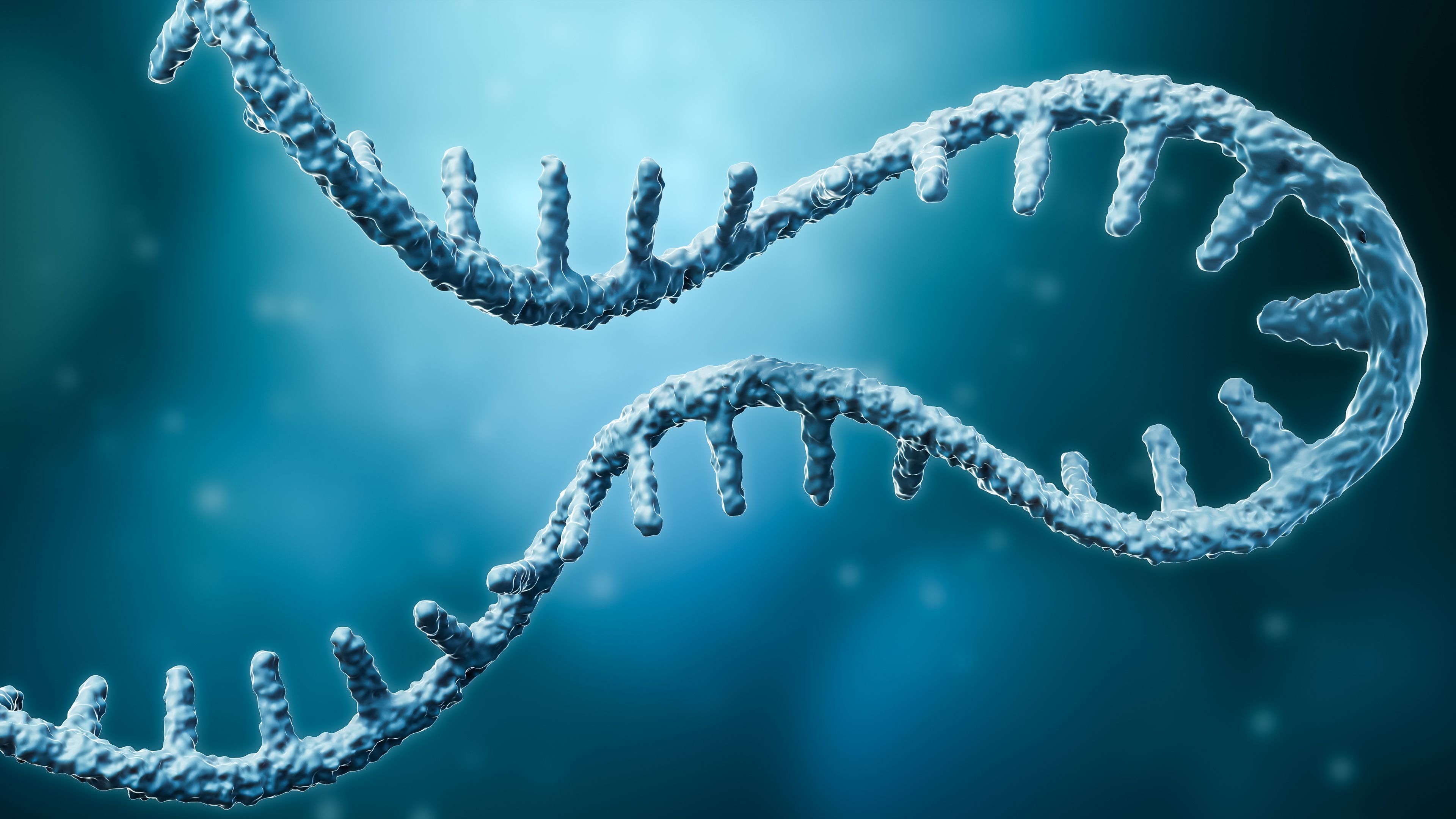Revolutionizing Diagnostics: Machine Learning Unleashes the Power of Surface-Enhanced Raman Spectroscopy
A recent study published in Applied Spectroscopy presents a new approach to biomedical diagnosis through the surface-enhanced Raman spectroscopy (SERS)-based detection of micro-RNA (miRNA) biomarkers using a comparative study of interpretable machine learning (ML) algorithms (1). Led by Joy Q. Li of Duke University, the research team conducted more SERS research by introducing a multiplexed SERS-based nanosensor, named the inverse molecular sentinel (iMS) for miRNA detection. As machine learning (ML) increasingly becomes a vital tool in spectral analysis, the researchers grappled with the high dimensionality of SERS data, a challenge for traditional ML techniques prone to overfitting and poor generalization (1).
Messenger RNA or mRNA strand 3D rendering illustration with copy space. Genetics, science, medical research, genome replication concepts. | Image Credit: © Matthieu - stock.adobe.com

The team explored the performance of ML methods, including convolutional neural network (CNN), support vector regression, and extreme gradient boosting, both with and without non-negative matrix factorization (NMF) for spectral unmixing of four-way multiplexed SERS spectra from iMS assays (1). Remarkably, CNN stands out for achieving high accuracy in spectral unmixing. However, the incorporation of NMF before CNN proves revolutionary, drastically reducing memory and training demands without compromising model performance on SERS spectral unmixing (1).
The study also used these ML models to analyze clinical SERS data from single-plexed iMS in RNA extracted from 17 endoscopic tissue biopsies. CNN and CNN-NMF, trained on multiplexed data, emerged as the top performers, demonstrating high accuracy in spectral unmixing (1).
To enhance transparency and understanding, the researchers employed gradient class activation maps and partial dependency plots to interpret the predictions. This approach not only showcases the potential of CNN-based ML in spectral unmixing of multiplexed SERS spectra, but it also underscores the significant impact of dimensionality reduction on performance and training speed (1).
This research highlights the intersection of spectroscopy and machine learning, providing new opportunities for precise and efficient diagnostics that could enhance biomedical applications and improve patient outcomes.
This article was written with the help of artificial intelligence and has been edited to ensure accuracy and clarity. You can read more about our policy for using AI here.
Reference
(1) Li, J. Q., Neng-Wang, H., Canning, A. J., et al. Surface-Enhanced Raman Spectroscopy-Based Detection of Micro-RNA Biomarkers for Biomedical Diagnosis Using a Comparative Study of Interpretable Machine Learning Algorithms. Appl. Spectrosc. 2023, ASAP. DOI: 10.1177/0037028231209053
AI-Powered SERS Spectroscopy Breakthrough Boosts Safety of Medicinal Food Products
April 16th 2025A new deep learning-enhanced spectroscopic platform—SERSome—developed by researchers in China and Finland, identifies medicinal and edible homologs (MEHs) with 98% accuracy. This innovation could revolutionize safety and quality control in the growing MEH market.
AI-Driven Raman Spectroscopy Paves the Way for Precision Cancer Immunotherapy
April 15th 2025Researchers are using AI-enabled Raman spectroscopy to enhance the development, administration, and response prediction of cancer immunotherapies. This innovative, label-free method provides detailed insights into tumor-immune microenvironments, aiming to optimize personalized immunotherapy and other treatment strategies and improve patient outcomes.
New AI-Powered Raman Spectroscopy Method Enables Rapid Drug Detection in Blood
February 10th 2025Scientists from China and Finland have developed an advanced method for detecting cardiovascular drugs in blood using surface-enhanced Raman spectroscopy (SERS) and artificial intelligence (AI). This innovative approach, which employs "molecular hooks" to selectively capture drug molecules, enables rapid and precise analysis, offering a potential advance for real-time clinical diagnostics.
Best of the Week: Chewing Gum with SERS, Soil Carbon Analysis, Lithium-Ion Battery Research
January 17th 2025Top articles published this week include a Q&A interview that discussed using surface-enhanced Raman spectroscopy (SERS) to investigate microplastics released from chewing gum and an article about Agilent’s Solutions Innovation Research Award (SIRA) winners.